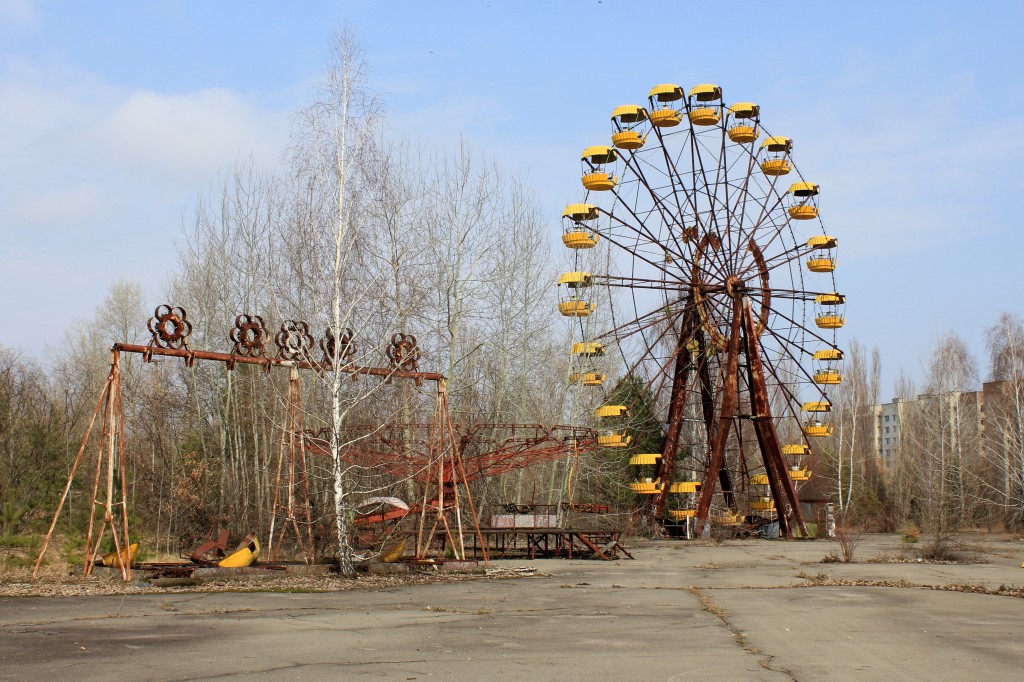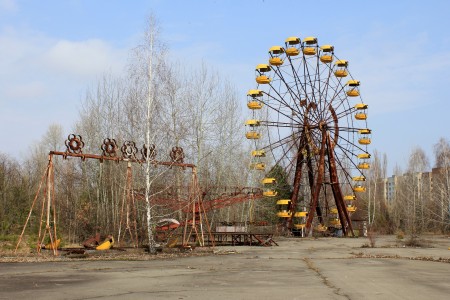 Much has been made of the role of the operators in the Chernobyl disaster. The 1986 Summary Report on the Post-Accident Review Meeting on the Chernobyl Accident (INSAG-1) of the International Atomic Energy Agency’s (IAEA’s) International Nuclear Safety Advisory Group accepted the view of the Soviet experts that “the accident was caused by a remarkable range of human errors and violations of operating rules in combination with specific reactor features which compounded and amplified the effects of the errors and led to the reactivity excursion.” In particular, according to the INSAG-1 report: “The operators deliberately and in violation of rules withdrew most control and safety rods from the core and switched off some important safety systems.”
Much has been made of the role of the operators in the Chernobyl disaster. The 1986 Summary Report on the Post-Accident Review Meeting on the Chernobyl Accident (INSAG-1) of the International Atomic Energy Agency’s (IAEA’s) International Nuclear Safety Advisory Group accepted the view of the Soviet experts that “the accident was caused by a remarkable range of human errors and violations of operating rules in combination with specific reactor features which compounded and amplified the effects of the errors and led to the reactivity excursion.” In particular, according to the INSAG-1 report: “The operators deliberately and in violation of rules withdrew most control and safety rods from the core and switched off some important safety systems.”
However, the IAEA’s 1992 INSAG-7 report, The Chernobyl Accident: Updating of INSAG-1, was less critical of the operators, with the emphasis shifted towards “the contributions of particular design features, including the design of the control rods and safety systems, and arrangements for presenting important safety information to the operators. The accident is now seen to have been the result of the concurrence of the following major factors: specific physical characteristics of the reactor; specific design features of the reactor control elements; and the fact that the reactor was brought to a state not specified by procedures or investigated by an independent safety body. Most importantly, the physical characteristics of the reactor made possible its unstable behaviour.” But the report goes on to say that the International Nuclear Safety Advisory Group “remains of the opinion that critical actions of the operators were most ill judged. As pointed out in INSAG-1, the human factor has still to be considered as a major element in causing the accident.”
It is certainly true that the operators placed the reactor in a dangerous condition, in particular by removing too many of the control rods, resulting in the lowering of the reactor’s operating reactivity margin (ORM, see information page on RBMK Reactors). However, the operating procedures did not emphasise the vital safety significance of the ORM but rather treated the ORM as a way of controlling reactor power. It could therefore be argued that the actions of the operators were more a symptom of the prevailing safety culture of the Soviet era rather than the result of recklessness or a lack of competence on the part of the operators (see Appendix to information page on Nuclear Power in Russia, Soviet Nuclear Culture).
In what is referred to as his Testament – which was published soon after his suicide two years after the accident – Valery Legasov, who had led the Soviet delegation to the IAEA Post-Accident Review Meeting, wrote: “After I had visited Chernobyl NPP I came to the conclusion that the accident was the inevitable apotheosis of the economic system which had been developed in the USSR over many decades. Neglect by the scientific management and the designers was everywhere with no attention being paid to the condition of instruments or of equipment… When one considers the chain of events leading up to the Chernobyl disaster, why one person behaved in such a way and why another person behaved in another etc, it is impossible to find a single culprit, a single initiator of events, because it was like a closed circle.”
The initial death toll was officially given as two initial deaths plus 28 from acute radiation syndrome. One further victim, due to coronary thrombosis, is widely reported, but does not appear on official lists of the initial deaths. The 2006 report of the UN Chernobyl Forum Expert Group “Health”, Health Effects of the Chernobyl Accident and Special Health Care Programmes, states: “The Chernobyl disaster caused the deaths of 30 power plant employees and firemen within a few days or weeks (including 28 deaths that were due to radiation exposure).”
Apart from the initial 31 deaths (two from the explosions, one reportedly from coronary thrombosis – see Note c above – and 28 firemen and plant personnel from acute radiation syndrome), the number of deaths resulting from the accident is unclear and a subject of considerable controversy. According to the 2006 report of the UN Chernobyl Forum’s ‘Health’ Expert Group1: “The actual number of deaths caused by this accident is unlikely ever to be precisely known.”
On the number of deaths due to acute radiation syndrome (ARS), the Expert Group report states: “Among the 134 emergency workers involved in the immediate mitigation of the Chernobyl accident, severely exposed workers and fireman during the first days, 28 persons died in 1986 due to ARS, and 19 more persons died in 1987-2004 from different causes. Among the general population affected by the Chernobyl radioactive fallout, the much lower exposures meant that ARS cases did not occur.”
According to the report: “With the exception of thyroid cancer, direct radiation-epidemiological studies performed in Belarus, Russia and Ukraine since 1986 have not revealed any statistically significant increase in either cancer morbidity or mortality induced by radiation.” The report does however attribute a large proportion of child thyroid cancer fatalities to radiation, with nine deaths being recorded during 1986-2002 as a result of progression of thyroid cancer.
A summary of the estimates by the Expert Group of the total number of deaths can be found in Chernobyl Accident Appendix 2: Health Impacts.
There have been fatalities in military and research reactor contexts, e.g. Tokai-mura.
Although most reports on the Chernobyl accident refer to a number of graphite fires, it is highly unlikely that the graphite itself burned. According to the General Atomics website (http://gt-mhr.ga.com/safety.php): “It is often incorrectly assumed that the combustion behavior of graphite is similar to that of charcoal and coal. Numerous tests and calculations have shown that it is virtually impossible to burn high-purity, nuclear-grade graphites.” On Chernobyl, the same source states: “Graphite played little or no role in the progression or consequences of the accident. The red glow observed during the Chernobyl accident was the expected color of luminescence for graphite at 700°C and not a large-scale graphite fire, as some have incorrectly assumed.”
A 2006 Electric Power Research Institute Technical Report2 states that the International Atomic Energy Agency’s INSAG-1 report is…potentially misleading through the use of imprecise words in relation to graphite behaviour. The report discusses the fire-fighting activities and repeatedly refers to “burning graphite blocks” and “the graphite fire”. Most of the actual fires involving graphite which were approached by fire-fighters involved ejected material on bitumen-covered roofs, and the fires also involved the bitumen. It is stated: “The fire teams experienced no unusual problems in using their fire-fighting techniques, except that it took a considerable time to extinguish the graphite fire.” These descriptions are not consistent with the later considered opinions of senior Russian specialists… There is however no question that extremely hot graphite was ejected from the core and at a temperature sufficient to ignite adjacent combustible materials.
There are also several referrals to a graphite fire occurring during the October 1957 accident at Windscale Pile No. 1 in the UK. However, images obtained from inside the Pile several decades after the accident showed that the graphite was relatively undamaged.
The International Chernobyl Project, 1990-91 – Assessment of Radiological Consequences and Evaluation of Protective Measures, Summary Brochure, published by the International Atomic Energy Agency, reports that, in June 1989, the World Health Organization (WHO) sent a team of experts to help address the health impacts of radioactive contamination resulting from the accident. One of the conclusions from this mission was that “scientists who are not well versed in radiation effects have attributed various biological and health effects to radiation exposure. These changes cannot be attributed to radiation exposure, especially when the normal incidence is unknown, and are much more likely to be due to psychological factors and stress. Attributing these effects to radiation not only increases the psychological pressure in the population and provokes additional stress-related health problems, it also undermines confidence in the competence of the radiation specialists.”
Image taken from page 31 of The International Chernobyl Project Technical Report, Assessment of Radiological Consequences and Evaluation of Protective Measures, Report by an International Advisory Committee, IAEA, 1991 (ISBN: 9201291914)
A 55-page summary version the revised report, Chernobyl’s Legacy: Health, Environmental and Socio-Economic Impacts and Recommendations to the Governments of Belarus, the Russian Federation and Ukraine, The Chernobyl Forum: 2003–2005, Second revised version, as well as the Report of the UN Chernobyl Forum Expert Group “Environment” and the Report of the UN Chernobyl Forum Expert Group “Health” are available from the IAEA’s webpage for the Chernobyl Forum (http://www-ns.iaea.org/meetings/rw-summaries/chernobyl_forum.htm) and the World Health Organization’s webpage on Ionizing radiation (http://www.who.int/ionizing_radiation/a_e/chernobyl/en/index1.html)
The United Nations Scientific Commission on the Effects of Atomic Radiation (UNSCEAR) is the UN body with a mandate from the General Assembly to assess and report levels and health effects of exposure to ionizing radiation. Exposures and effects of the Chernobyl accident, Annex J to Volume II of the 2000 United Nations Scientific Committee on the Effects of Atomic Radiation Report to the General Assembly, is available at the UNSCEAR 2000 Report Vol. II webpage (www.unscear.org/unscear/en/publications/2000_2.html). It is also available (along with other reports) on the webpage for UNSCEAR’s assessments of the radiation effects of The Chernobyl accident (www.unscear.org/unscear/en/chernobyl.html). The conclusions from Annex J of the UNSCEAR 2000 report are in Chernobyl Accident Appendix 2: Health Impacts
The quoted comment comes from a 6 June 2000 letter from Lars-Erik Holm, Chairman of UNSCEAR and Director-General of the Swedish Radiation Protection Institute, to Kofi Annan, Secretary-General of the United Nations. The letter is available on the website of Radiation, Science, and Health (www.radscihealth.org/rsh/)
A reinforced concrete casing was built around the ruined reactor building over the seven months following the accident. This shelter – often referred to as the sarcophagus – was intended to contain the remaining fuel and act as a radiation shield. As it was designed for a lifetime of around 20 to 30 years, as well as being hastily constructed, a second shelter – known as the New Safe Confinement – with a 100-year design lifetime is planned to be placed over the existing structure. See also ASE keeps the lid on Chernobyl, World Nuclear News (19 August 2008).
Source: World Nuclear









